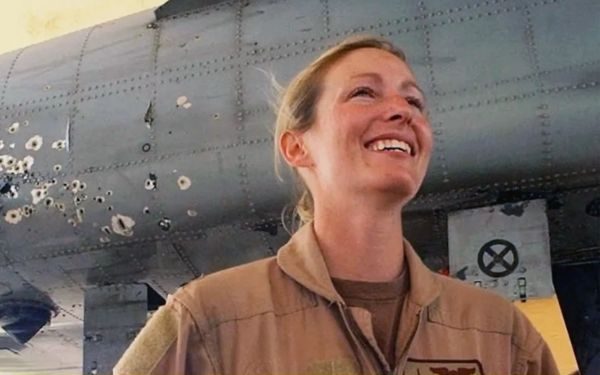During a critical mission in Afghanistan, U.S. Air Force pilot Kim Campbell remained calm and focused under extreme pressure. While flying her A-10 Thunderbolt II, an enemy missile struck her jet, destroying its hydraulic systems and making it hard to control.
Despite the damage, Campbell kept control. She switched to manual flight and managed to stabilize the aircraft with impressive precision. Against all odds, she flew the crippled plane back to base, saving her life and that of her flight leader. Her quick thinking and bravery turned a deadly situation into an unforgettable display of courage and skill.
Kim Campbell’s A-10 Warthog is hit mid-mission
On April 7, 2003, Campbell flew alongside Lt. Col. Rick “Bino” Turner on a mission to destroy an Iraqi command post in Baghdad. As they approached their target, they received a distress call—the 3rd Infantry Division was pinned down and needed help immediately.
Flying over the city, they navigated carefully to avoid harming civilians and limiting collateral damage. They stayed alert for surface-to-air missile threats and took evasive action to protect Campbell’s A-10. Despite thick cloud cover, both pilots pressed forward with full focus.
After hitting several enemy targets with rockets and 30mm cannon fire, the mission was nearly over. Then disaster struck—a missile hit Campbell’s jet, bursting it into a bright orange fireball. The explosion wrecked her hydraulic system, causing the plane to dive sharply.
Campbell falls back on her training
Campbell’s training immediately took over as she fought to regain control of the A-10. “In an emergency situation like that, I felt like time slowed down. I knew I had to take quick action but I also had to figure out what was going on in my cockpit,” she recalled.
She switched to manual flight mode, relying on the A-10’s special design. Unlike most jets, the A-10 can fly without hydraulics thanks to a manual reversion system that lets pilots control the plane in emergencies.
A 1982 Air Force report noted how tough this system is to operate: “Aircraft control in the manual flight mode is exceptionally demanding of piloting skills.”
Flying manual—while under fire
Campbell had to quickly re-learn how to fly manually—while enemy guns were still firing. Luckily, her instincts and training were sharp. “Once I flipped the switch to manual reversion, I don’t remember it being overly difficult,” she said. “I was just so relieved the airplane was finally climbing and responding.”
With the worst behind them, Campbell and Turner escaped the battle zone. She then flew the A-10 manually for 300 miles back to Kuwait.
Manual landings take things to the next level
Landing the A-10 manually is no small feat—especially with no hydraulics. Fine control is nearly impossible. The official checklist warns pilots to “attempt only under ideal conditions.”
But Campbell faced anything but ideal. Her jet was riddled with bullet holes, and the right horizontal stabilizer was badly damaged. After discussing the options with Turner, they decided she should try landing. “His actions after I was hit were absolutely critical,” Campbell said. “I was so focused on flying the airplane, getting it under control, whereas he had more awareness of what was going on around me.”
Campbell pulled off the landing and was awarded the Distinguished Flying Cross. Lt. Col. Mike Millen praised her, saying, “Kim landed that jet with no hydraulics better than I land the A-10 every day with all systems operational.”
Oddly enough, when she tried similar manual landings in simulators later, they didn’t go as well.
Back in the air the next day
Even with all the bravery she showed, Campbell admitted she felt terrified. “When I go back and listen to the audio recording [of the flight], I can hear the fear, I just didn’t have time to think about it,” she said. Still, she was back flying the very next day.
Now retired, Campbell logged 1,800 flight hours and flew over 100 combat missions in the A-10. She stayed focused on her goal: “I never wanted to be labeled as a female fighter pilot,” she said. “I wanted to be the best pilot. So just work hard and be credible. Be good at what you do.”









